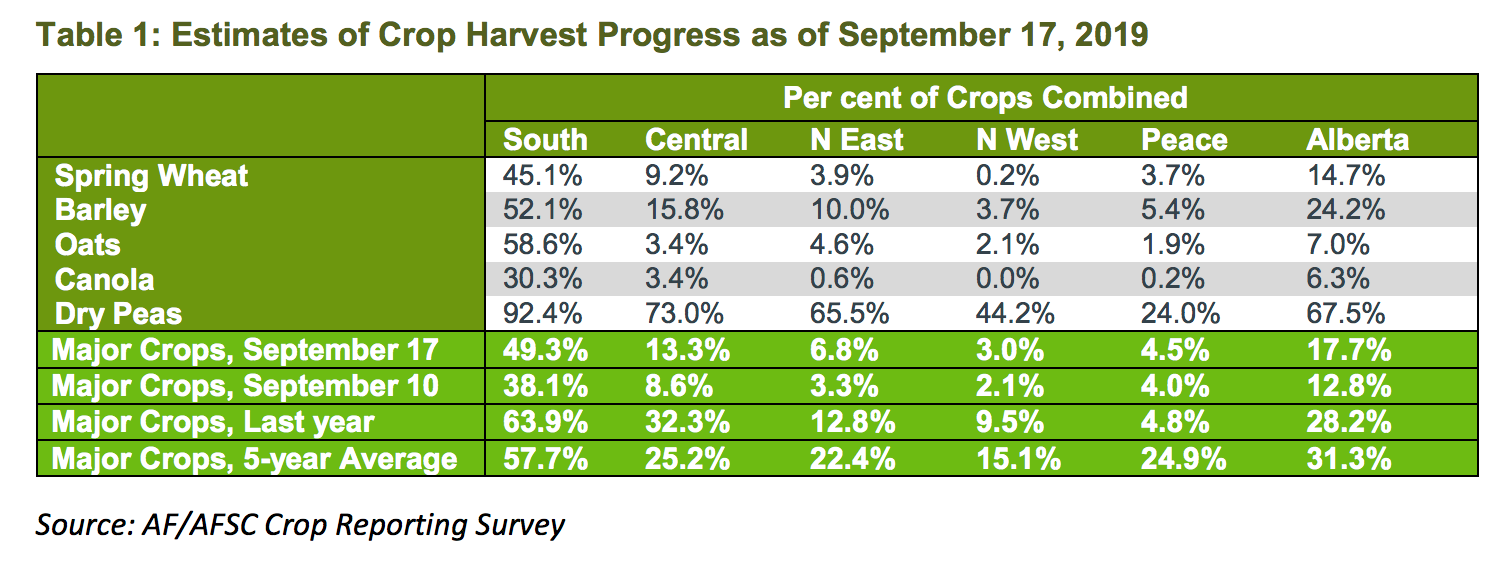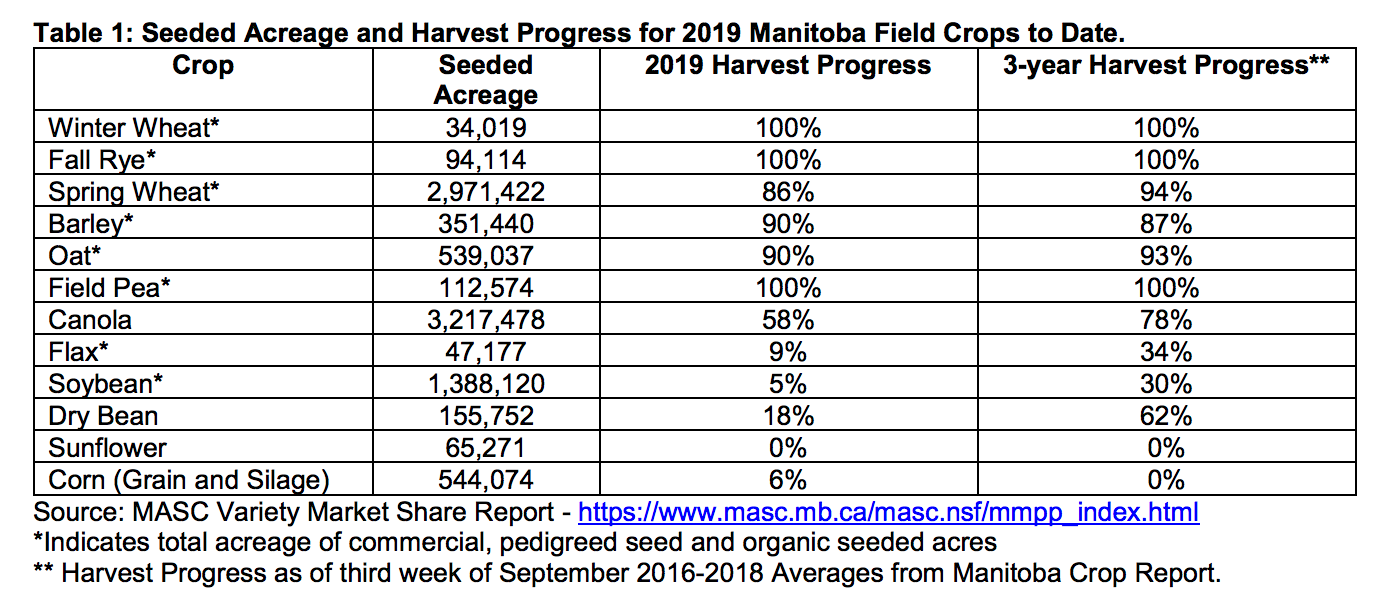
News
Harvesting
Harvest slow but progressing in the Prairies
Highlights from the latest crop reports from Alberta, Saskatchewan and Manitoba.
September 25, 2019 By Top Crop Manager
When there’s a day without rain, prairie producers are taking full advantage of it. Harvest is underway, but some areas are experiencing rainy days that are slowing progress down. As a result, harvest progress across the Prairies is slightly behind the five-year average for each province, according to the latest provincial crop reports.
Alberta
- Harvest operations have resumed in most parts of the province, according to the latest report published on Sept. 17, thanks to warmer and windy conditions.
- However, progress has been slow, due to some shower activities bringing from less than one millimetre (mm) of rain in the eastern and southern parts of the province to upwards of 30 mm in some areas in the Peace Region.
- Producers across the province were able to make some harvest progress as well as swathing, especially in canola fields.
- Some light frosts have been reported for the Peace Region with the lowest temperature recorded between -1C and -2C over the last week.
- Provincially, about 18 per cent of major crops have now been harvested, up five per cent from last week, while 20 per cent are in the swath, up 10 per cent from a week ago.
- When compared to the five-year averages (2014-2018), harvest progress is behind in all regions, led by the Peace Region (20 per cent behind), followed by the North East (15 per cent behind) and Central and North West Regions (12 per cent behind). Harvest of major crops in the Southern Region is now eight per cent behind.
- Provincially, nearly 68 per cent of dry peas, 24 per cent of barley, 15 per cent of spring wheat, seven per cent of oats and six per cent of canola are now in the bin.
- Also, 40 per cent of canola, 12 per cent of barley, nine per cent of spring wheat and seven per cent of oats have been swathed.
A full regional breakdown is available in Alberta’s latest crop report.

When compared to the five-year averages, harvest progress is behind in all regions. Table courtesy of Alberta Agriculture.
Saskatchewan
- Warm weather and wind has allowed combining to resume.
- As of Sept. 16, 23 cent of the crop is now in the bin, up from 18 per cent last week.
- Overall harvest progress is still well behind the five-year (2014-2018) average of 50 per cent for this time of year.
- Thirty-six per cent of the crop is now swathed or ready to straight-cut.
- A general rain fell over much of the province with the largest amounts being reported in the central and southern regions.
- Harvest is most advanced in the southwest region, where 37 per cent of the crop is now combined.
- The southeast region has 28 per cent combined and the west-central region 26 per cent. The northeast region has 15 per cent combined, the east-central region 12 per cent combined while the northwest region has 10 per cent.
- Across the province, topsoil moisture conditions on cropland are rated as 14 per cent surplus, 77 per cent adequate, eight per cent short and one per cent very short.
- Most crop damage this past week was due to localized flooding and strong winds. There have been some reports of crops bleaching and sprouting in areas with excess moisture.
A full regional breakdown is available in Saskatchewan’s latest crop report.
Manitoba
- Harvest progress has been slowed by widespread rainfall and limited to one or two days per week.
- Drying of tough and wet grain is common for recently harvested cereals and canola.
- Soybean harvest has started on early varieties in the Central, Interlake and Eastern regions.
- Overall harvest progress is approximately 59 per cent complete, as of Sept. 24. Progress is below the three-year average of 70.2 per cent for the fourth week of September.
- Winter cereal seeding is complete.
A full regional breakdown is available in Manitoba’s latest crop report.

Harvest is slightly behind its three-year harvest progress average. Table courtesy of Manitoba Agriculture.